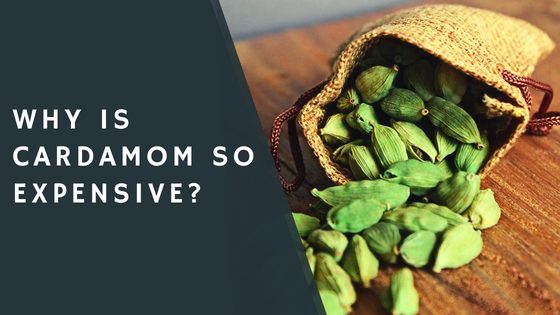Saffron cultivation has been taking place for more than 3,000 years. The spice is derived from the stigmas of the crocus sativus, or saffron crocus, flower. Sunny, dry, well-drained soils are best for growing saffron.
How Saffron Grows?
Saffron grows as a dried flower that is harvested from the stamen of the crocus sativus plant. It is a perennial herb that typically grows around 1.5 meters tall. The saffron crocus grows in a crescent-shaped flower that reaches a width of around 1.5 cm.
This blog post will tell you all about the saffron growing procedure to grow saffron indoors and outdoors, so keep on reading to learn more.

See Also: How to Use Saffron?
How Saffron Grows?
Saffron is a spice derived from the dried stigmas of the saffron crocus flower. It is a perennial plant that is native to Southwest Asia but is now cultivated in many countries around the world.
The saffron crocus is a bulbous plant that grows to a height of 8-15 inches. The flowers are deep purple with three red stigmas in the center. Once the flowers have bloomed, they must be hand-picked in the early morning.
The stigmas are carefully separated from the flowers and then dried. This drying process is what gives saffron its unique flavor and color. Once dried, the stigmas are ready to be used as a spice.
Step-by-Step Guide to Grow Saffron
If you’re interested in growing your saffron, here’s a step-by-step guide:
- Start with corms: Corms are small bulb-like structures that are the base of the saffron plant. You can purchase corms online or from a nursery specializing in bulbs.
- Plant the corms: Plant the corms in well-drained soil in an area that gets full sun. Space them about 4 inches apart and plant them about 2 inches deep.
- Water and fertilize: Water your plants regularly and fertilize them monthly with a balanced fertilizer.
- Wait for blooming: The saffron plant flowers in the fall. When the flowers bloom, they will only last for a few days.
- Harvest the stigmas: Cut the flower off at the base and carefully remove the stigmas. These are the long, red threads that are used to make saffron.
- Dry the stigmas: Spread them on a rack or screen and allow them to air dry for several days. Once they’re dry, you can store them in an airtight container.
- Use your saffron: Saffron can be used whole or ground into a powder. It’s typically used as a seasoning in dishes such as paella, risotto, and bouillabaisse.
Where Are Saffron Grown?
Saffron grows in many different places around the world. The biggest producers of saffron are Iran, Greece, Morocco, and Spain. India, Afghanistan, Italy, and Turkey also produce large quantities of saffron.
Saffron grows best in warm climates with well-drained soil. The plant prefers full sun but can tolerate some shade. Saffron crocuses (Crocus sativus) are typically planted in the fall and bloom in the spring.
Each flower only produces a few strands of saffron, so it takes a lot of flowers to produce even a small amount of this spice.
After the flowers bloom and the petals fall off, the stigmas (the parts of the flower that will eventually become saffron) must be carefully hand-picked and then dried.
Once dried, saffron can be used whole or ground into a powder. This spice is used to flavor and color many different dishes from all over the world.
Can Saffron Be Grown Hydroponically?
Saffron is an incredibly delicate and fickle spice. The stigma must be hand-picked at just the right moment and then immediately dried to preserve its flavor. For these reasons, growing saffron hydroponically can be difficult.
The key to success is to replicate the conditions of the saffron’s natural habitat as closely as possible. Saffron grows best in a sunny, dry climate with well-drained soil. While it is possible to grow saffron hydroponically, it is not easy.
To give your plants the best chance of success:
- Start with healthy bulbs or corms.
- Plant them in a deep container with a light, sandy soil mix. The soil should be watered regularly, but not too frequently.
- Place the container in a sunny spot where it receives at least six hours of direct sunlight daily.
Harvest the stigmas when they are bright red and fully extended. Dry them immediately to preserve their flavor. Then, with patience and care, you can successfully grow saffron hydroponically.
Can Saffron Be Grown Indoors?
Saffron is a fragrant, seasoning spice that is derived from the flower of the Crocus sativus plant. Saffron has a long history of being used in cooking and as a dyestuff. Saffron is also mentioned in the Bible and ancient Greek and Roman texts.
Saffron can be grown indoors but takes patience and careful attention to detail. The Crocus sativus bulbs must be planted in well-drained soil and given total sun exposure.
They also need to be kept moist, but not too wet, during their growing season, which lasts from October to April. Once the bulbs have flowered and the saffron threads have been harvested, they can be dried and stored for future use.
To dry saffron, tie the threads into small bundles and place them on a screen or rack in a warm, dry place out of direct sunlight. Allow them to dry completely before storing them in an airtight container in a cool, dark place.
How to Grow Saffron in Australia?
Australia is a great place to grow saffron. The climate is perfect for the plant, and there is plenty of sunlight. However, there are a few things you need to know before you start growing saffron in Australia.
First, you need to purchase a good quality saffron bulb. In most gardening stores, you can find these. Once you have your bulb, plant it in a pot that has well-draining soil. Don’t overwater it, but water it regularly.
Once your plant has grown tall enough, it will produce flowers. These flowers need to be pollinated for the plant to produce saffron threads. You can hand-pollinate the flowers or use a small brush to transfer pollen from one flower to another.
Once the flowers have been pollinated, they will begin to die back. At this point, cut the flower stalks off at the base of the plant. These stalks can tie up the saffron threads as they dry.
After about six weeks, your saffron threads will be ready to harvest. First, cut them from the plant and allow them to air dry completely before storing them in an airtight container.
How to Grow Saffron in South Africa?
To grow your saffron in South Africa, you need to start with good-quality corms (bulbs). You can get these from a reputable supplier or order them online.
The ideal time to plant saffron corms is in late summer or early autumn when the weather is still warm but not too hot. Plant the corms about 5cm deep and 15cm apart in well-drained soil. Water them well after planting.
Saffron corms will start sprouting within a few weeks and flower in late spring or early summer. To encourage flowering, keep the plants well-watered and fertilised with a high-potassium fertiliser.
Once the flowers have bloomed, carefully remove the stigmas (thread-like red strands) and dry them for use in cooking.
Can Saffron Be Grown in the Us?
Yes, saffron can be grown in the United States. Saffron is a fall-blooming crocus that grows best in well-drained, sandy soils with full sun. Although saffron can be grown from seed, it is more commonly propagated by corms (bulbs).
It would help if you planted corms at a depth of 4-6 inches and a distance of 6-8 inches. Saffron requires little care and is relatively pest and disease free. However, a newly planted corm takes 3-5 years to bloom. Once established, saffron will flower annually for 10-15 years.
Can Saffron Grow in California?
Saffron is a spice made from the stigmas of the saffron crocus (Crocus sativus), and it is revered for its distinct flavor and color.
The saffron crocus is native to Southwest Asia and has been cultivated for centuries in countries like Iran, Greece, Morocco, and Spain. While saffron can be grown in other parts of the world, the climate in California is not ideal for this crop.
The saffron crocus thrives in areas that have cool winters and hot, dry summers. This type of climate is found in Mediterranean countries, but it is not common in California.
Saffron corms (the bulb-like underground structures that the plant uses to store food) can be damaged by frost, so they must be planted in an area that will stay above freezing during the winter months.
In addition, saffron crocuses need a lot of sunlight to produce flowers (and stigmas). They also need well-drained soil that is not too rich in nutrients.
These conditions are challenging in California, where most of the state experiences cool winters and foggy summers. For these reasons, it isn’t easy to grow saffron commercially in California.
How to Grow Saffron in New Zealand?
To grow saffron in New Zealand, it is necessary to procure corms from a reliable source. The corms should be planted in mid-spring in a sunny, well-drained location.
They should be spaced about 10cm apart and planted 5cm deep. Once the plants have flowered and produced seed pods, they can be harvested.
Conclusion
Saffron is a beautiful, fragrant spice that has been used in cooking for centuries. It’s also very expensive, due in part to the fact that it takes so long to grow. If you’re curious about how saffron grows, read on to learn more about this fascinating plant.
I am an accomplished tech writer with a passion for simplifying complex technology concepts. With a background in Tech, James has dedicated their career to making the intricacies of the digital world accessible to a broad audience.








